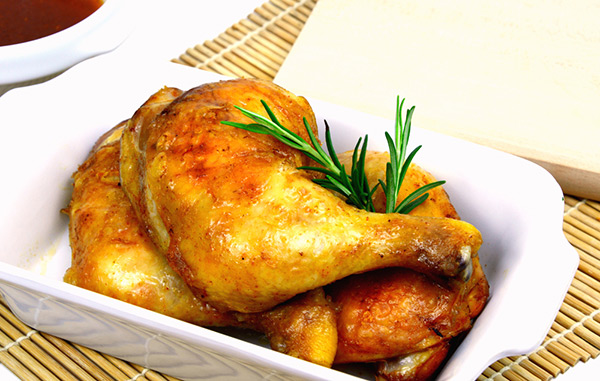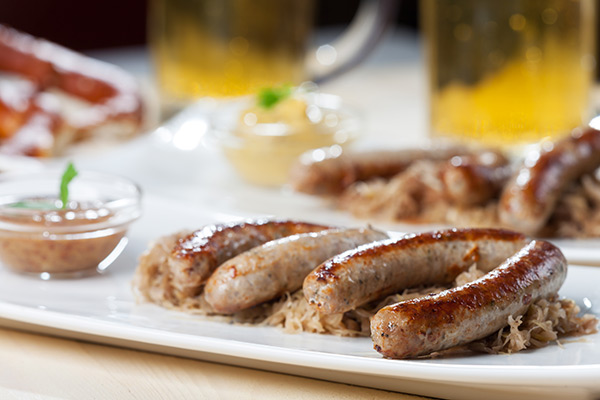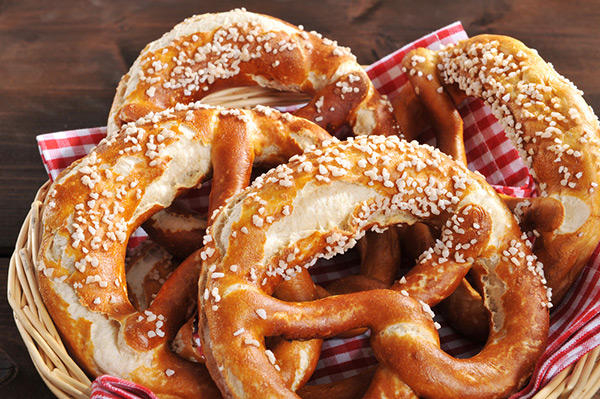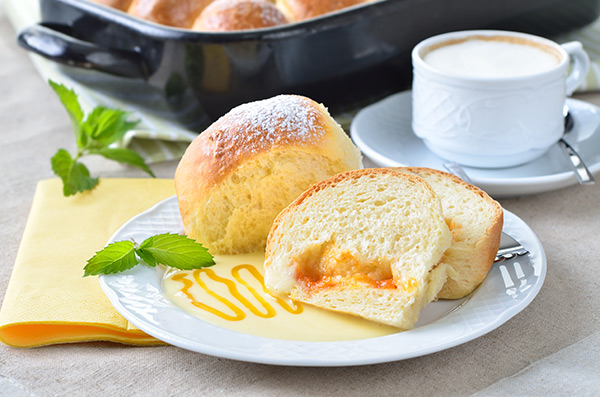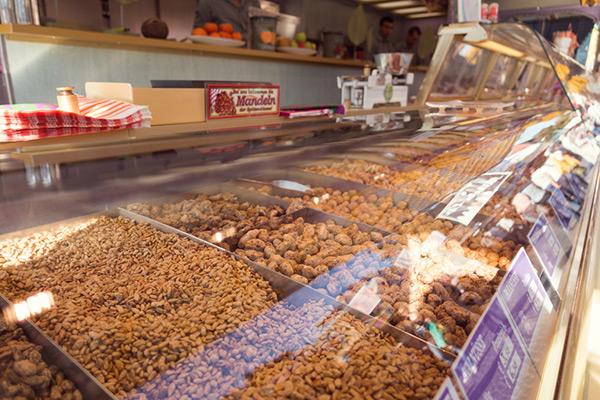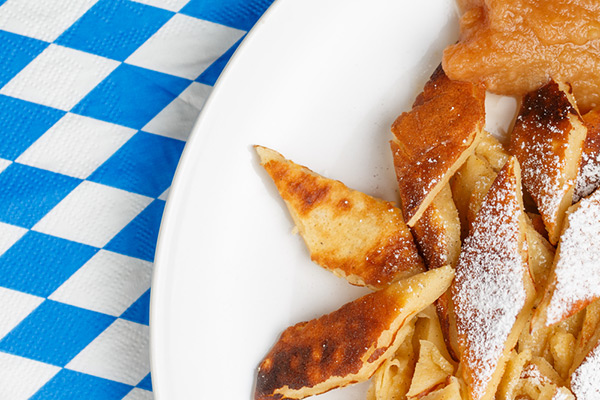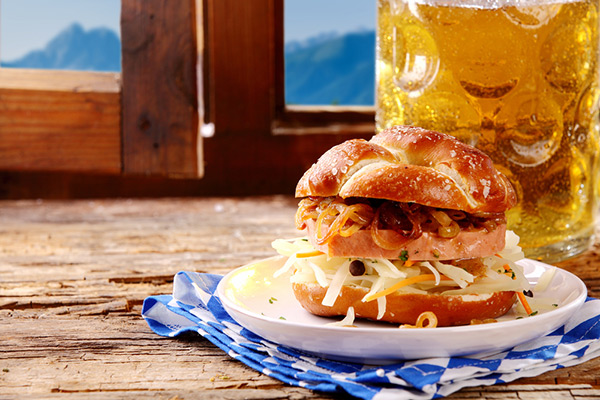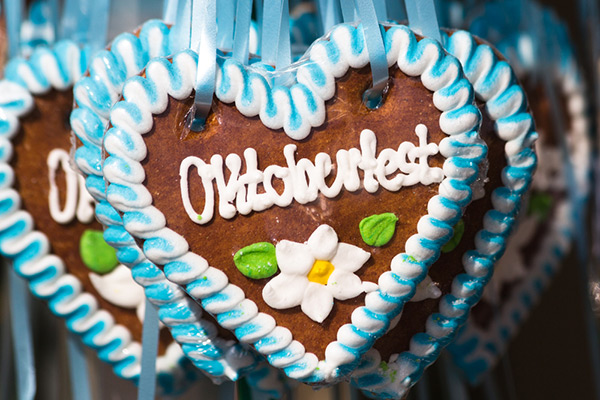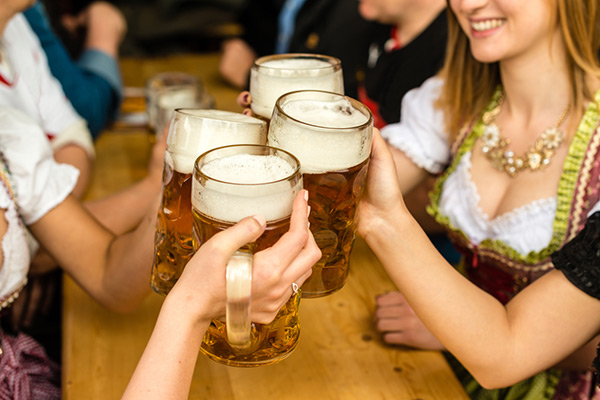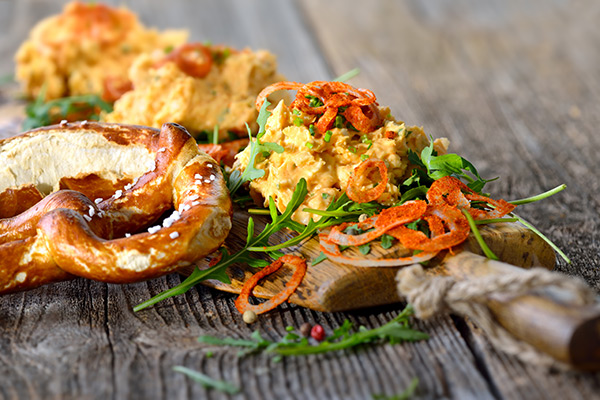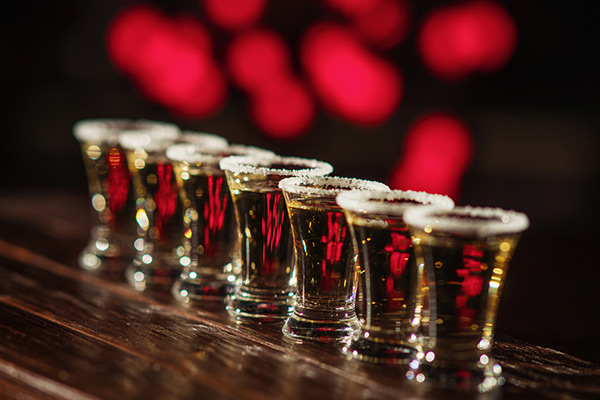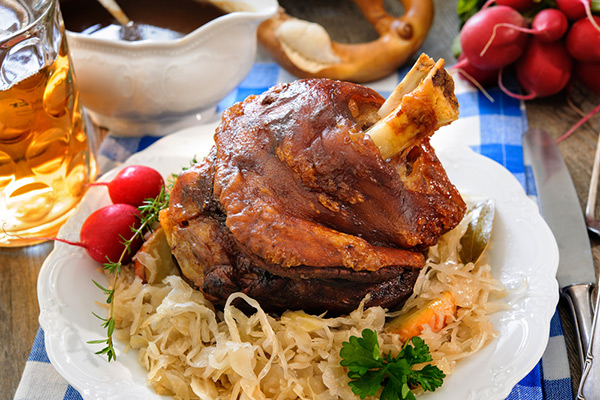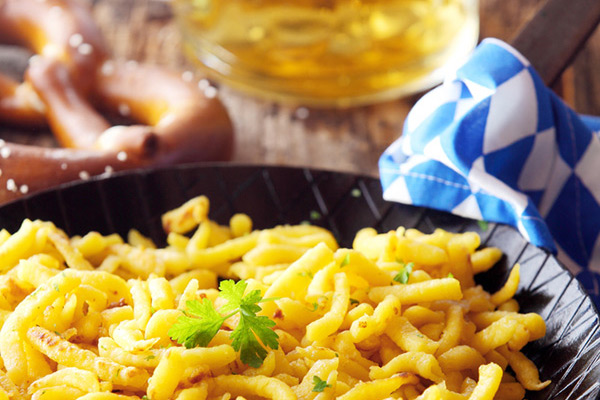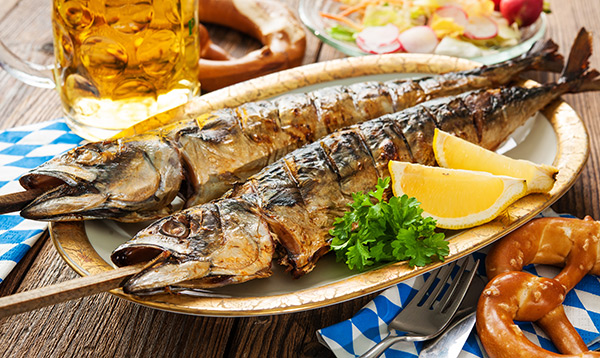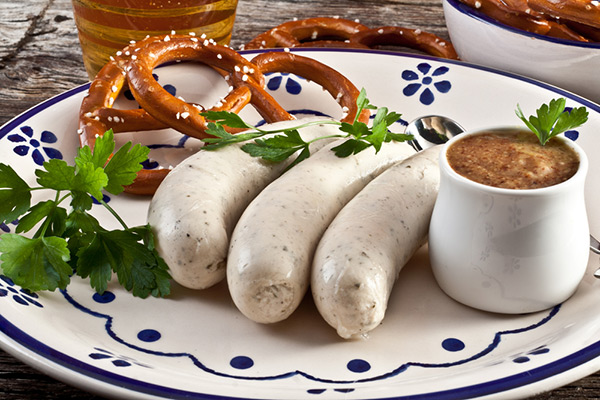Chapter 3 Food & Drink
No trip to the Oktoberfest would be complete without enjoying some typical Bavarian specialities. After all, the selection of foods – both sweet and savoury – is immense and everyone will find something they like: in recent years, the famously meat-focussed culinary offering has been extended to cater to vegetarians and vegans, too.
In the larger tents, the focus is unsurprisingly on the beer, which is a special brew produced specifically for the Oktoberfest by six traditional Munich breweries: Spaten, Paulaner, Löwnebräu, Hofbräu, Hacker-Pschorr, and Augustiner. As well as in typical litre tankards, the beer can be bought as a shandy (half and half beer to lemonade); non-alcoholic drinks are also available. Then there are tents which focus on other types of drinks such as the Weinzelt and the small café-style tents.
People who have reservations pay for their first beers and a meal using vouchers. These coupons can, however, be kept for later use or passed on – i.e. they are a kind of parallel currency. You might also see some people picnicking on their own food in the beer gardens (which is allowed, albeit not inside the tents). Due to safety concerns, drinks in glass bottles are banned from the festival area.
Bavarian specialities at the Oktoberfest
Traditional Oktoberfest cuisine has got something for everyone, from hearty, decidedly meaty fare through to sweet treats. In fact, the only group Wiesn food doesn’t really have much to offer is calorie counters. Then again, anyone looking to avoid high-calorie nourishment is in the wrong place entirely.
What a lot of visitors underestimate is the effect Wiesn beer has on an empty stomach, so the best way to enjoy the fest is to start with a good meal. That’s why each tent offers a broad range of foods, from filling main dishes through to snacks to help soak up the continuing stream of beer. The classics below are available in almost every tent.
How to tap a keg like a professional
Tapping at home
-
1
Barrels of beer shouldn’t be tapped immediately on arrival: leave yours to settle for as long as possible to avoid excessive foaming. It’s also important to keep the barrel as cool as you can during drinking: try wrapping it in cold towels or putting on a tray of ice.
-
2
Traditionally, barrels are set up on dedicated trestles, but a good, solid table that can take the weight will do just fine for home use. The barrel mustn’t slip or slide when being tapped, but setting up the table with a slight incline can help you to serve the beer.
-
3
Remember to make sure the tap is closed before putting it into the opening towards the bottom of the keg. A barrel tap is closed when the handle is parallel to the direction in which the beer will flow.
-
4
Hold the tap tight to the barrel with one hand and use the other to knock it in with a wooden mallet. Aim for the front of the tap and hit as straight as possible until the tap is firmly inside the barrel.
-
5
Once you’ve tapped the keg, pour the first glass and tip it out: then you’re ready to start drinking. You’ll notice that the pressure starts to drop after some time; that’s when you knock in the ventilation valve on the top of the barrel.

Tapping at the Oktoberfest
On the first day of the Oktoberfest, the ceremonial tapping of the first keg by the Mayor of Munich is the moment that everyone’s waiting for – after all, not a drop of beer is sold beforehand! The Anstich, as it is called in German, has taken place on the first Saturday after 15th September at 12 midday sharp every year since 1950. The tradition was founded by Mayor Thomas Wimmer that year: he was the first to officially open the Oktoberfest by means of tapping a keg.
Another custom came about in 1980, when the legendary Minister President of Bavaria Franz Joseph Strauß was given the first tankard of beer from the barrel. Once the beer is flowing, the words “O’zapft is!‿ are shouted out (that’s Bavarian for “It has been tapped!‿) and twelve shots are fired outside. That’s the sign for other tents to start serving. In 1950 and 1951, the first barrel tapped by the Mayor was Hofbräu; since 1952, though, Spatenbräu has had the honour. An annual sport is to bet on how many hits of the mallet the Mayor will need to tap the keg: thus far, the record is shared by Christian Ude and Dieter Reiter, both of whom managed it in just two strokes.



